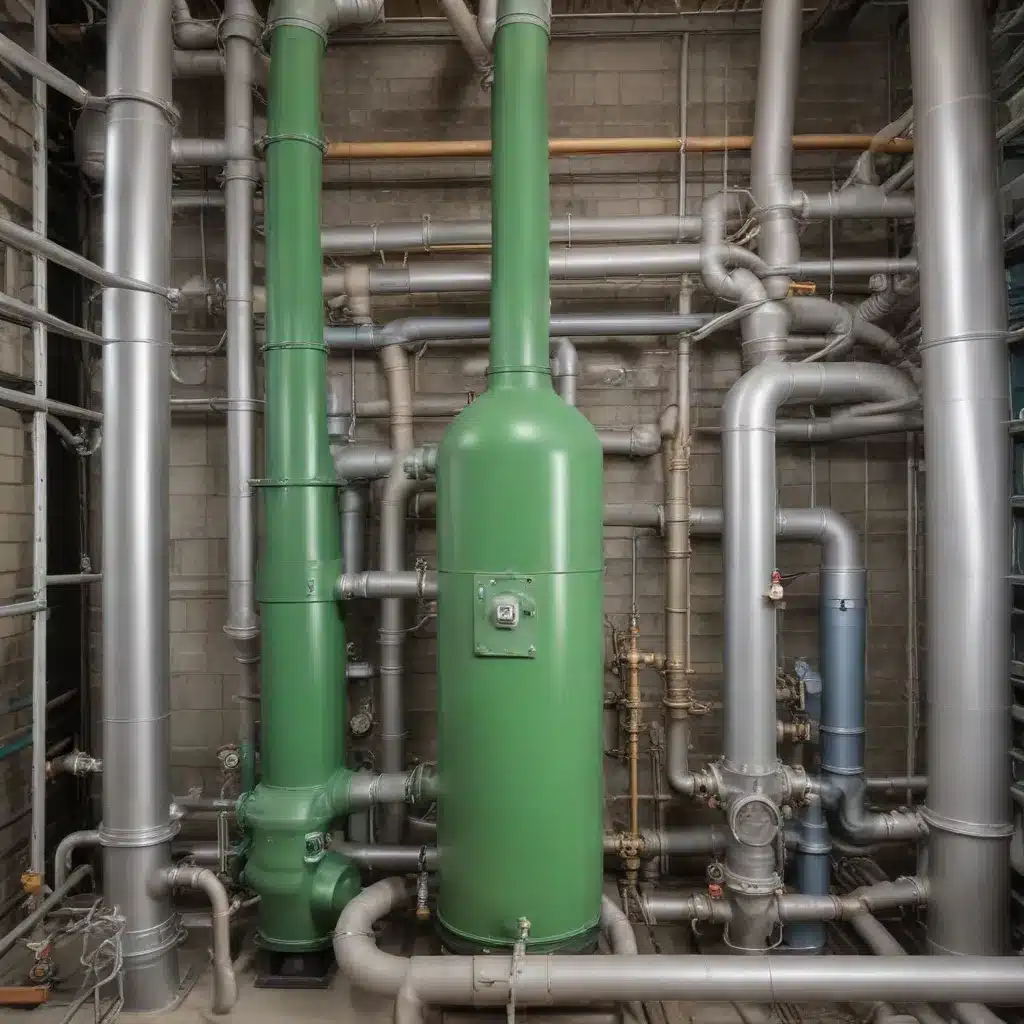
The Untapped Potential of Industrial Waste
Manufacturing operations across various industries, from steel production to cement making and power generation, generate substantial volumes of flue gas as a byproduct. Traditionally, this flue gas has been released into the atmosphere, contributing to environmental pollution and degradation. However, recent advancements in technology have unlocked the potential to transform this industrial waste into a valuable energy resource, ushering in a new era of sustainable charcoal production.
Harnessing the Power of Flue Gas
Flue gas is a complex mixture, typically comprising carbon dioxide (CO2), carbon monoxide (CO), nitrogen (N2), water vapor (H2O), and varying levels of pollutants such as sulfur oxides and particulate matter. Through innovative capture technologies, including adsorption processes and chemical reactions, these components can now be extracted and isolated for subsequent utilization.
The integration of captured flue gas into the charcoal production process serves multiple purposes. It acts as a primary energy source, providing the necessary heat to drive the carbonization reactions essential for converting biomass into charcoal. This integration eliminates the need for additional external energy inputs, such as electricity or conventional fuels, thereby enhancing the economic viability and sustainability of the process.
Interestingly, the carbon dioxide within flue gas, often considered a greenhouse gas, plays a crucial role in this context. Instead of being released into the atmosphere, CO2 can serve as a reactant, enhancing the efficiency and quality of the charcoal production process. This dual benefit not only mitigates greenhouse gas emissions by utilizing CO2 but also improves the overall environmental footprint of charcoal production.
Environmental and Economic Benefits
From an environmental perspective, redirecting flue gas from industrial operations into charcoal production offers substantial advantages. It significantly reduces the emission of flue gases into the atmosphere, thereby mitigating their impact on climate change and improving air quality. This approach aligns with global efforts towards sustainable development by promoting cleaner energy alternatives and efficient resource utilization.
Economically, leveraging flue gas as an energy source for charcoal production presents compelling advantages for industries. It reduces operational costs by utilizing a waste product as a primary energy input, thereby enhancing economic efficiency and competitiveness. Furthermore, potential revenue streams from carbon capture and utilization initiatives provide additional financial incentives, supporting broader adoption and implementation across industrial sectors.
The Manufacturing Process: Harnessing Flue Gas for Charcoal Production
The manufacturing process of charcoal utilizing flue gas as a source of energy involves several key steps to efficiently convert biomass into a renewable fuel.
Flue Gas Capture and Preparation
- Capture Techniques: Flue gas, generated from industrial operations, is captured using specialized systems such as absorption towers or adsorption units.
- Pre-treatment: The captured flue gas may undergo pre-treatment to remove contaminants or adjust its composition, ensuring it is suitable and efficient as an energy source.
Charcoal Production Process
- Feedstock Preparation: Biomass feedstock, including wood chips, sawdust, agricultural residues, or municipal solid waste, is prepared for carbonization through shredding, drying, and sizing.
- Carbonization: The prepared biomass undergoes carbonization, a process where it is heated in the absence of oxygen (pyrolysis). This step breaks down the organic materials into charcoal, volatile gases, and liquid by-products.
- Energy Input: Instead of using external energy sources, the captured flue gas is introduced into the carbonization chamber, serving as the primary energy source to maintain and sustain the carbonization process.
Utilization of Flue Gas Components
- Carbon Dioxide (CO2) Utilization: The carbon dioxide present in flue gas can participate in chemical reactions during carbonization, enhancing the quality and yield of the produced charcoal. This utilization of CO2 helps reduce emissions and improve the overall efficiency of the process.
- Heat and Energy Recovery: The heat energy derived from flue gas not only sustains the carbonization process but can also be utilized for other industrial purposes, such as heating or steam generation, thereby increasing the overall energy efficiency of the operation.
Environmental and Economic Impacts
- Environmental Impact: By utilizing flue gas as an energy source for charcoal production, the process significantly reduces emissions of greenhouse gases and air pollutants that would otherwise be released into the atmosphere. This contributes to mitigating climate change and improving local air quality.
- Economic Viability: Industries benefit economically by reducing their reliance on costly external energy sources. The integration of flue gas as an energy input lowers production costs, enhances resource efficiency, and potentially creates revenue streams through carbon capture and utilization initiatives.
Technological Advancements and Optimization
Ongoing research and development are focused on optimizing the integration of flue gas into charcoal production processes. This includes improving capture technologies, enhancing carbonization efficiency, and exploring new applications for flue gas components.
While the concept shows promise, scaling up these integrated systems requires further technological advancements and investment. Industrial-scale implementation will benefit from advancements in process control, automation, and cost-effective capture technologies.
Conclusion: A Sustainable Future through Flue Gas Utilization
Utilizing flue gas as a source of energy for charcoal production represents a sustainable and innovative approach to transform industrial waste into a valuable resource. By integrating flue gas into the charcoal production process, industries can reduce greenhouse gas emissions, mitigate environmental pollution, and enhance energy efficiency, all while producing a renewable and eco-friendly fuel.
As research and development continue to optimize this process, the potential for broader adoption and implementation across various industrial sectors is promising. This approach aligns with global efforts towards sustainable development, offering a viable solution to address energy conservation, environmental protection, and climate change challenges.
The transformation of industrial waste into a useful energy resource through the utilization of flue gas in charcoal production is a testament to the power of innovation and the pursuit of a more sustainable future. As we strive to balance economic progress with environmental stewardship, this pioneering method serves as a shining example of the remarkable possibilities that lie within the realm of green energy alchemy.


